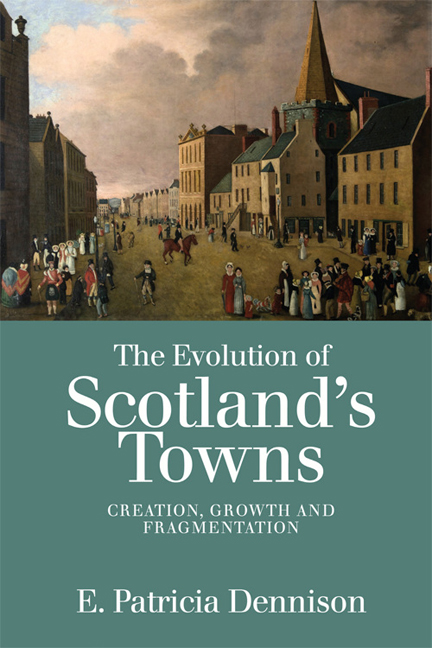Book contents
- Frontmatter
- Contents
- List of Figures
- Acknowledgements
- Image Credits
- List of Abbreviations
- Introduction
- 1 Medieval Towns
- 2 Daily Life in the Middle Ages
- 3 Medieval Faith and the Church
- 4 Encroachment on Burgh Society, 1550–1750
- 5 Man-made and Natural Disasters, 1550–1750
- 6 The Birth of Urban Scotland
- 7 The Victorian Town
- 8 The Twentieth Century
- Post-script: Footprints to Fragmentation
- Appendix: Population Statistics – A Select List
- Bibliography
- Index
2 - Daily Life in the Middle Ages
Published online by Cambridge University Press: 11 November 2020
- Frontmatter
- Contents
- List of Figures
- Acknowledgements
- Image Credits
- List of Abbreviations
- Introduction
- 1 Medieval Towns
- 2 Daily Life in the Middle Ages
- 3 Medieval Faith and the Church
- 4 Encroachment on Burgh Society, 1550–1750
- 5 Man-made and Natural Disasters, 1550–1750
- 6 The Birth of Urban Scotland
- 7 The Victorian Town
- 8 The Twentieth Century
- Post-script: Footprints to Fragmentation
- Appendix: Population Statistics – A Select List
- Bibliography
- Index
Summary
Daily life in the medieval town was dominated by the need to produce or buy food and other essentials for the family, and to secure thereby the economic stability of the town. For the vast majority this was a tough life, with little light relief. Market days were the highlight of the week, when the townspeople could buy goods that they had not grown or produced themselves, and outsiders came into the town to sell and obtain their supplies. Control of the market usually fell to the gild merchant. There is evidence of burghs with gilds merchant from the late twelfth century. In early burghs, men of all backgrounds were permitted to join – weavers, dyers, cobblers, skinners, fleshers (butchers), baxters (bakers), ale-makers, tavern-keepers, masons and plumbers. Early burgh laws officially excluded weavers, fleshers and dyers from gild membership but in practice most craftsmen were accepted into the gild fraternity.
Markets and merchants
The pattern of the medieval economy was based on the export of the primary products of agriculture, fishing and mining, and the import of a wide range of manufactured goods, as well as raw materials such as timber and iron. The most prominent feature in this period was the increasing concentration of overseas trade in a few larger burghs, leaving the smaller and middling ones to concentrate on domestic and regional trade. With the permanent loss of Berwick to the English (see p. 11), the ‘four great towns of Scotland’ – Edinburgh, Aberdeen, Dundee and Perth – paid 58 per cent of customs revenues to the crown in the 1370s. Four other towns paid almost half of the remaining customs revenue – Haddington, Linlithgow, Montrose and Lanark. By the 1590s the four great towns paid a staggering 80 per cent. The composition of the four towns rated fifth to eighth were Haddington and Montrose, as in the 1370s, with Dumbarton and the clustering of Fife ports around Pittenweem taking the place of Linlithgow and Lanark. Their share had, however, fallen to under 10 per cent. domination of the export trade was paramount: it paid almost 60 per cent of all customs by 1500 and 72 per cent by the 1590s.
- Type
- Chapter
- Information
- The Evolution of Scotland's TownsCreation, Growth and Fragmentation, pp. 47 - 76Publisher: Edinburgh University PressPrint publication year: 2017



